Decaf coffee
-
-
1kg - 30% OFF | 2kg - 50% OFF
-
Fast delivery
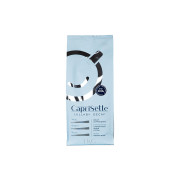
Decaf coffee beans Caprisette Lullaby Decaf, 1 kg
£20.23 £28.90 -30%
Add to basket-
Fast delivery

Decaf ground coffee Caprisette Lullaby Decaf, 500 g
£7.95 £15.90 -50%
Add to basket-
Fast delivery
-
New packaging
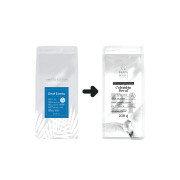
Specialty decaf coffee beans Black Crow White Pigeon Colombia Decaf, 250 g
£8.33 £11.90 -30%
Add to basket-
Fast delivery
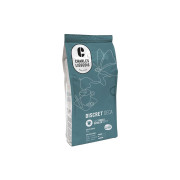
Decaf ground coffee Charles Liégeois Discret Déca, 250 g
£4.89 £6.99 -30%
Add to basket-
Fair trade
-
Fast delivery
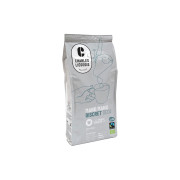
Ground decaffeinated coffee Charles Liégeois Mano Mano Discret Déca, 250 g
£5.59 £7.99 -30%
Add to basket-
Fast delivery
-
E-SHOP ONLY
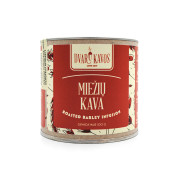
Barley coffee Dvaro Kavos, 100 g
£3.43 £4.90 -30%
Add to basket-
Fast delivery
-
E-SHOP ONLY
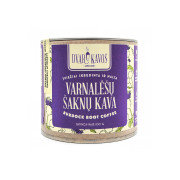
Burdock root coffee Dvaro Kavos, 100 g
£4.83 £6.90 -30%
Add to basket-
Fast delivery
-
E-SHOP ONLY
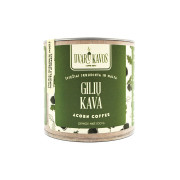
Acorn coffee Dvaro Kavos, 100 g
£3.85 £5.50 -30%
Add to basket-
Fast delivery
-
E-SHOP ONLY
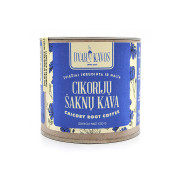
Chicory root coffee Dvaro Kavos, 100 g
£4.13 £5.90 -30%
Add to basket-
E-SHOP ONLY
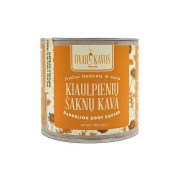
Dandelion root coffee Dvaro Kavos, 100 g
£5.53 £7.90 -30%
Add to basket-
Fast delivery
-
E-SHOP ONLY
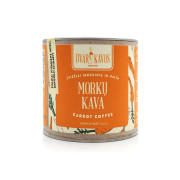
Carrot coffee Dvaro Kavos, 100 g
£4.83 £6.90 -30%
Add to basket-
50% OFF second
-
Fast delivery
-
E-SHOP ONLY
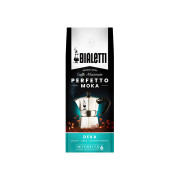
Decaf ground coffee Bialetti Perfetto Moka Decaf, 250 g
£5.59Add to basket-
Fast delivery
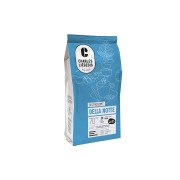
Decaf coffee beans Charles Liégeois Della Notte, 500 g
£15.90Add to basket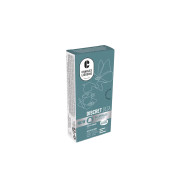
Decaf coffee capsules compatible with Nespresso® Charles Liégeois Discret Deca, 10 pcs.
£3.49 £4.99 -30%
Add to basket-
New
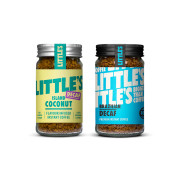
Instant coffee set Little’s Brazil Decaf x Island Coconut, 2 x 50 g
£10.39 £12.99 -20%
Add to basket-
New
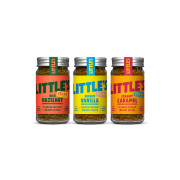
Decaf flavoured instant coffee set Little’s French Vanilla x Creamy Caramel x Rich Hazelnut, 3 x 50 g
£10.39 £12.99 -20%
Add to basket-
Fair trade
-
Fast delivery
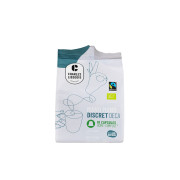
Organic decaf coffee capsules compatible with Nespresso® Charles Liégeois Mano Mano Discret Deca, 10 pcs.
£3.64 £5.20 -30%
Add to basket
Decaf coffee pads Coffee Premium Decaf, 36 pcs.
£4.13 £5.50 -25%
Add to basket-
Fast delivery
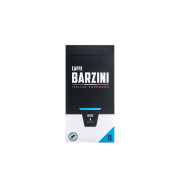
Decaf coffee capsules compatible with Nespresso® Caffe Barzini Decaf, 22 pcs.
£4.83 £6.90 -30%
Add to basket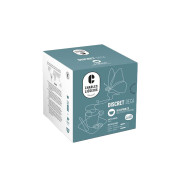
Coffee capsules compatible with NESCAFÉ® Dolce Gusto® Charles Liégeois Discret Deca, 16 pcs.
Sold Out-
New
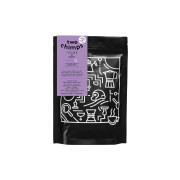
Decaf coffee beans Two Chimps 3 O’Clock at Night, 250 g
Sold Out-
New

Decaf coffee beans Two Chimps 3 O’Clock at Night, 1 kg
Sold Out-
New

Decaf coffee beans Two Chimps 3 O’Clock at Night, 500 g
Sold Out-
LOCAL
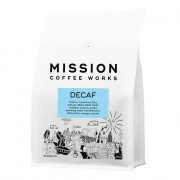
Decaf coffee beans Mission Coffee Works Decaf, 1 kg
How is decaffeinated coffee made?
Caffeine - is a water soluble material, thus its extraction from coffee is very simple and natural. Green (unroasted) coffee beans are soaked. For that, steam and water is used. Later on, with the help of activated carbon filters caffeine stays in the water and the dried beans are roasted. However, the end result might still have a little bit of caffeine left - up to 0,1 pct. (3mg). It is important to mention that caffeine itself is tasteless and odorless. Thus, its extraction from coffee does not have a significant effect on its taste. Those who are looking for their favorite decaffeinated coffee should know - like all other coffee types, they can be grown in different countries, be of different types or roasting levels.
Is this comment useful?Read more Show lessAbout Decaf coffee
Decaf coffee has been growing in popularity at an impressive rate lately—this is true for both Coffee Friends and the rest of the world’s coffee connoisseurs. While most people can tolerate caffeine fairly well and thus help caffeinated varieties remain at the top of the bestseller list, the increasing number of decaf fans is still obvious. More often than not, they include those who must limit their caffeine intake for one reason or another, be it various health issues, pregnancy, sensitivity to caffeine or a simple tendency to go over the recommended daily limit, yet still craving the familiar coffee taste. Whatever’s the case for you, you’re guaranteed to find some high-quality decaf products in Coffee Friend’s assortment. Before you go on to browse our selection, however, let’s try and find out how coffee becomes decaf in the first place!
Modern and Safe Decaffeination Methods
Any discussion about caffeine and its removal should begin from getting to know the substance and its unique effects better. If you’re interested in finding out more on the topic, we suggest reading our posts here and here. When it comes to getting caffeine removed from the beans, three main methods are generally used: the first of them relies on solvents, the second one employs CO2, and the third one uses an innovative technique called Swiss Water Process. It’s important to note that each and every one of these methods is absolutely safe, strictly regulated and closely monitored. Due to numerous requirements placed on food products traded here in the EU, foods that pose a risk of any kind simply cannot enter the market. Coffee Friend’s range of decaf products includes nothing but coffees that have been decaffeinated safely and with the help of reliable methods. We’ll try and take a closer look at each of them below.
Decaffeination Using Solvents
This method involves removing caffeine with the help of special solvents. Methylene chloride is the most popular solvent used for this purpose. When removing caffeine in this manner, green coffee beans are first immersed in water to help them release the stimulant with more ease. Afterwards, a solvent is employed to extract caffeine from the coffee. Keep in mind that there’s no chance for the solvent to remain inside the bean once it’s been roasted. First of all, beans are washed thoroughly after coming into contact with the solvent. Secondly, they’re roasted at temperatures that are high enough to get rid of any remaining chemical traces. Last but not least, coffee is always subject to strict quality control, ensuring again and again that the resulting product is absolutely safe to consume.
CO2 Decaffeination Process
Another popular method is the completely natural carbon dioxide decaffeination process. Using this technique, caffeine is removed from the beans with the help of liquefied gas: this gas functions as a solvent of sorts and extracts caffeine molecules from the coffee, leaving all other particles intact. Afterwards, both CO2 and caffeine are pumped out of their present container and into a different one. Caffeine is then separated from the gas. The latter can be reused for decaffeination. The extracted caffeine has other uses too, and comes in handy when manufacturing certain medicines, energy drinks and the like. This decaffeination technique is fairly recent and, as a result, particularly expensive, which is why it’s used exclusively by large coffee manufacturers at the moment. It produces delicate flavours, is environmentally friendly and succeeds at preserving the finest qualities of the chosen beans.
Swiss Water Process
The third decaffeination type involves the removal of caffeine using water and green coffee extract. It’s referred to as the “Swiss” process because it was actually developed in Switzerland. Using this method, green (unroasted) coffee beans are first immersed in warm water, which causes caffeine and flavour particles to dissolve. The resulting liquid (which has by then turned into water mixed with the so-called green coffee extract) is afterwards used to immerse a different batch of beans: this time around, caffeine dissolves, while the precious flavour molecules are preserved by the water that’s already saturated with them. Almost all of the caffeine (up to 99%) is successfully removed when using this method, and the flavours remain intact. The extremely subtle, complex Swiss Water process is employed only when decaffeinating high-quality specialty coffees. Caffeinated specialty coffees are always marked by extraordinary tasting notes, so preserving them during the process of decaffeination is always of the utmost importance.
Decaf Coffees in Coffee Friend’s Assortment
As the popularity of decaf varieties grows and demand for such coffee keeps on increasing, manufacturers all over the world are now scrambling to include it in their product ranges. Coffee Friend pays special attention to its own range of products, so you can be sure you’ll find nothing but decaf varieties of the highest quality in our assortment. If you’re a decaf fan, you’ll be able to stick to your old coffee-drinking habits too, by the way: decaffeinated coffees come in a variety of shapes that are sure to be familiar to you, be it coffee beans, ground coffee, coffee capsules or coffee pads.
Decaf Coffee Beans
Those who want to enjoy their brew to the fullest know that out of all coffee types, decaf coffee beans offer the largest number of tastes and aromas. Our clients’ undisputed favourite is the specialty Colombia Decaf Excelso. Originating from the famous Colombian region of Huila and processed using the exclusive Swiss Water Process®, these extraordinary coffee beans are marked Specialty for a reason. Based on the SCA quality scale, this coffee scores 81.5 points out of the possible 100. It’s characterised by notes of chocolate and caramel, coupled with some subtle, refreshing acidity that might remind you of apple or citrus.
If you’re on the lookout for decaf beans of the highest quality, take a look at Charles Liégeois “Della Notte” produced by our loyal partners from a well-known Belgian roastery. This full-bodied Brazilian variety features nutty, cocoa-y notes mixed with delicate hints of red fruit. Caffeine has been removed using the natural CO2 method.
Do you want to cut down on caffeine instead of quitting it altogether? Then consider purchasing “Fifty-Fifty”, an exquisite coffee bean blend from Goat Story. The caffeine content of this specialty variety has been cut in half by mixing two different types of coffees: a caffeinated and a decaf one. If you’re looking for a happy medium between regular coffee and a decaffeinated brew, you’re unlikely to find anything better than this!
Decaf Ground Coffee
One of Coffee Friend’s most popular ground decaf coffees is Charles Liégeois “Discret Deca”. Marked by an intense aroma and a well-balanced taste, this one’s bound to please sworn fans of classic coffee flavours. The Brazilian coffee used in the blend endows the drink with notes of spices and roasted cereal. There’s an alternative for those who choose to buy green too, by the way: it’s the organic Charles Liégeois “Mano Mano Discret Déca”. Both of these coffees have been decaffeinated using the natural CO2 method.
Our assortment also boasts a ground decaf variety designed specially for moka pots: if you own one or plan on adding it to your brewing arsenal, take a look at Bialetti “Perfetto Moka Decaf”. This predominantly Brazilian blend is marked by a delicate taste, pleasant aroma and fairly firm structure.
Decaf Coffee Capsules
If you’re a fan of capsules, there’s cause for celebration: decaf coffee capsules are on the rise, which means there’s more and more for you to choose from. If our Charles Liégeois “Discret Deca” sounds like something you’d like to try, you’re in luck: it’s available in the form of capsules too! There’s Charles Liégeois “Discret Deca” for Dolce Gusto® appliances and Charles Liégeois “Discret Deca” compatible with Nespresso coffee machines.
Nespresso enthusiasts might want to try some of the latest additions to our decaf capsule assortment, namely the Italian “Cafe Barzini” or the innovative “Verum”. Caffe Barzini “Decaf” boasts a medium body, delightful creaminess and flavours of red fruit and cocoa. “Verum”, on the other hand, offers two types of decaf capsules. Verum “Dély Beauty” is enriched with Verisol collagen, AnaGain, selenium, vitamins B3 and B8, all of which have been scientifically proven to lead to clearer skin, stronger nails and healthier hair. The company’s second offering, Verum “Dély Energize”, boasts ginseng extract, alpinia extract and oat straw extract in addition to vitamins B2, B3, B8 and B12. Who needs caffeine when you can enjoy this mixture of superfood goodness?!
Decaf Coffee Pads
If you’re a proud owner of a pad coffee machine, Coffee Friend’s got you covered! Give Coffee Premium “Decaf” a try. These coffee pads are particularly fragrant: they boast a pleasant aroma of vanilla and spices. The prepared brew is light and delicate. Caffeine has been removed using the natural CO2 method.
We’re proud to be able to offer you a variety of delicious, high-quality decaf coffees. Now go ahead and enjoy the flavours!
Read moreWe have updated our cookie policyOptionsCookies! They are always useful, but we cannot use them without your consent.You can select which cookies you agree to use. Some of them are essential and cannot be turned off.
-

